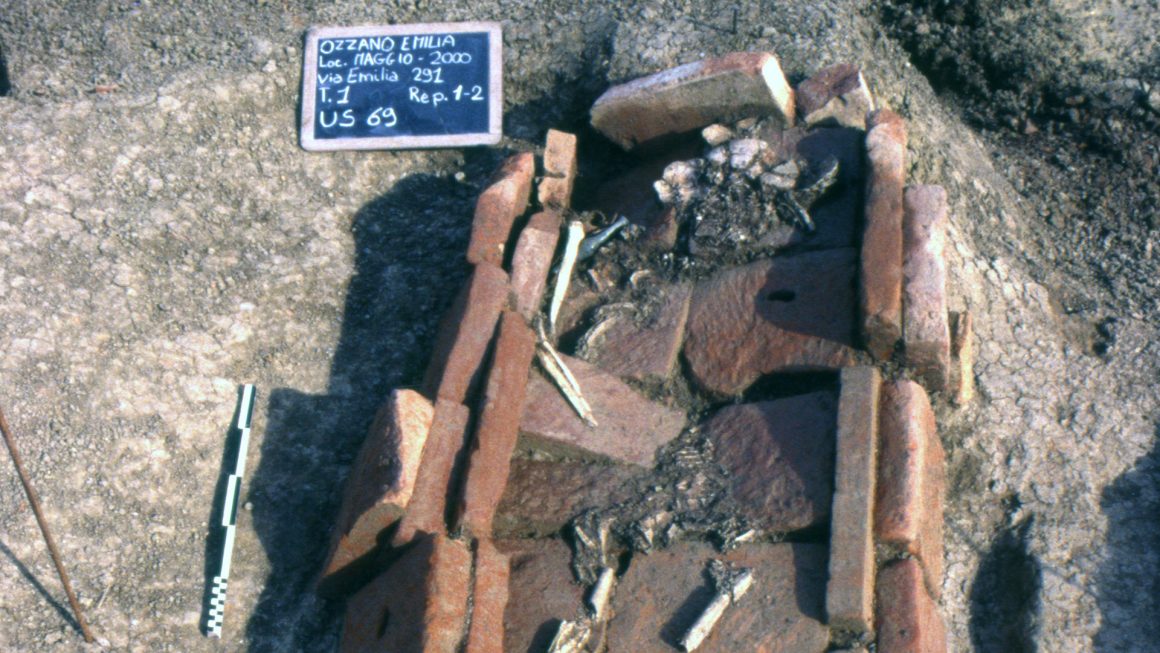Suburban area, west of the Gorgara stream, north of the via Emilia, via di Claterna
SABAP-BO excavations 2000
Excavations carried out in 2000 on the former Podere S. Pietro brought to light a small necropolis of four tombs located near a crossroads between the via Emilia and a centurial cardinal road that ran through the plain to the north and reached the foothills to the south. Although this is an area on the border between the countryside and the city, it is more likely that the burials belonged to citizens living in Claterna or in its immediate suburbs, rather than to inhabitants of a nearby farm.
The four tombs of the Podere S. Pietro date from the middle of the Imperial Age (1st-2nd century AD).
The two best preserved were contained within a Roman ‘sesquipedal’ brick coffin in which the corpses were laid according to the rite of inhumation; the coffins were then covered either with other bricks laid flat or ‘alla cappuccina’ (= double sloping roof tiles). Together with the deceased, a few grave goods were also laid: earthenware vessels, a terracotta oil lamp, an unguentarium.
The rite of inhumation became established in the Roman world only between the 1st and 2nd centuries AD, whereas previously incineration or cremation had prevailed. In the latter case, first the deceased was burnt on the funeral pyre, then his ashes were collected, selected from the residue of combustion, and placed in the tomb in a cinerary urn together with the grave goods.
The deposition of objects of various kinds inside the tombs, the grave goods, can be explained by the fact that the ancient Romans believed in a form of survival of the spirit of the deceased; it was believed that the memory of the deceased should remain with the living and their descendants, thus allowing the spirit to remain immortal. For this reason, special attention was paid to the mortal remains and therefore to the rites performed at the tomb, before, during and after the funeral.
The ‘cult of the dead‘ in fact did not end with the funeral: the tombs were regularly visited, especially during private and public celebrations dedicated to them.
To cite just a few examples, the coena novendialis was held privately nine days after the funeral on the locus sepulturae, adjacent to the tomb, while the Parentalia was a very important public occasion, falling over a nine-day period from 13 to 21 February.

